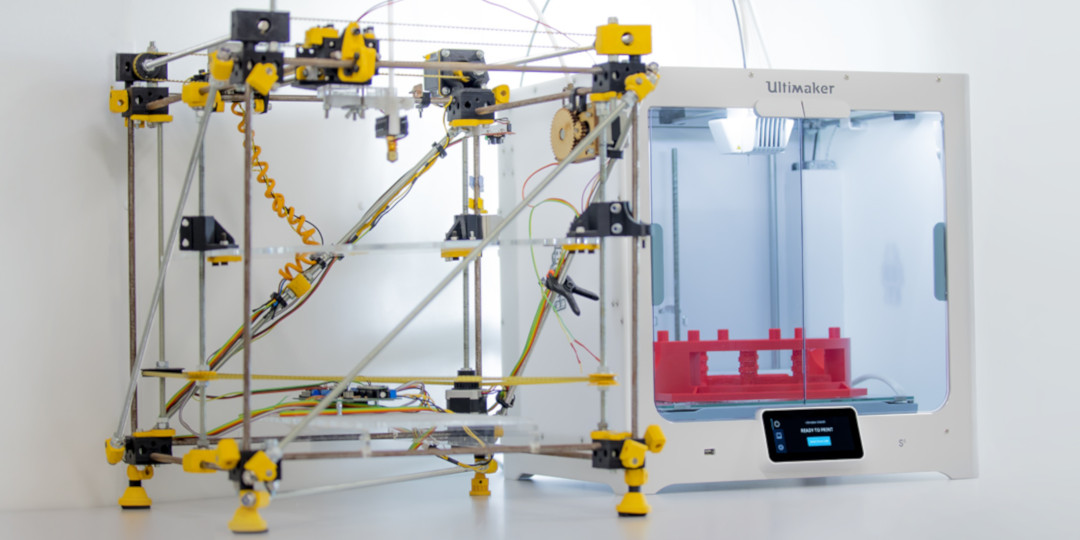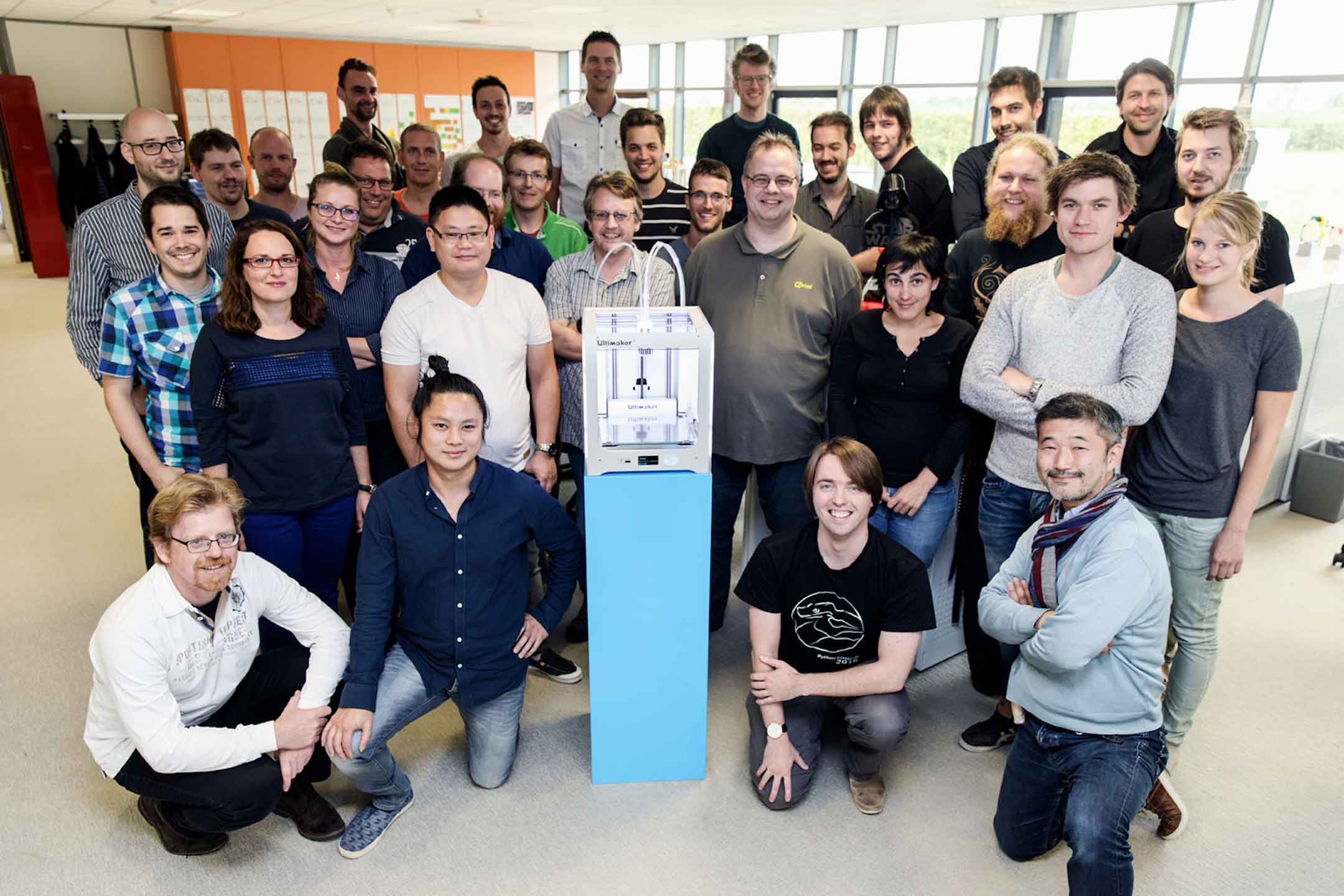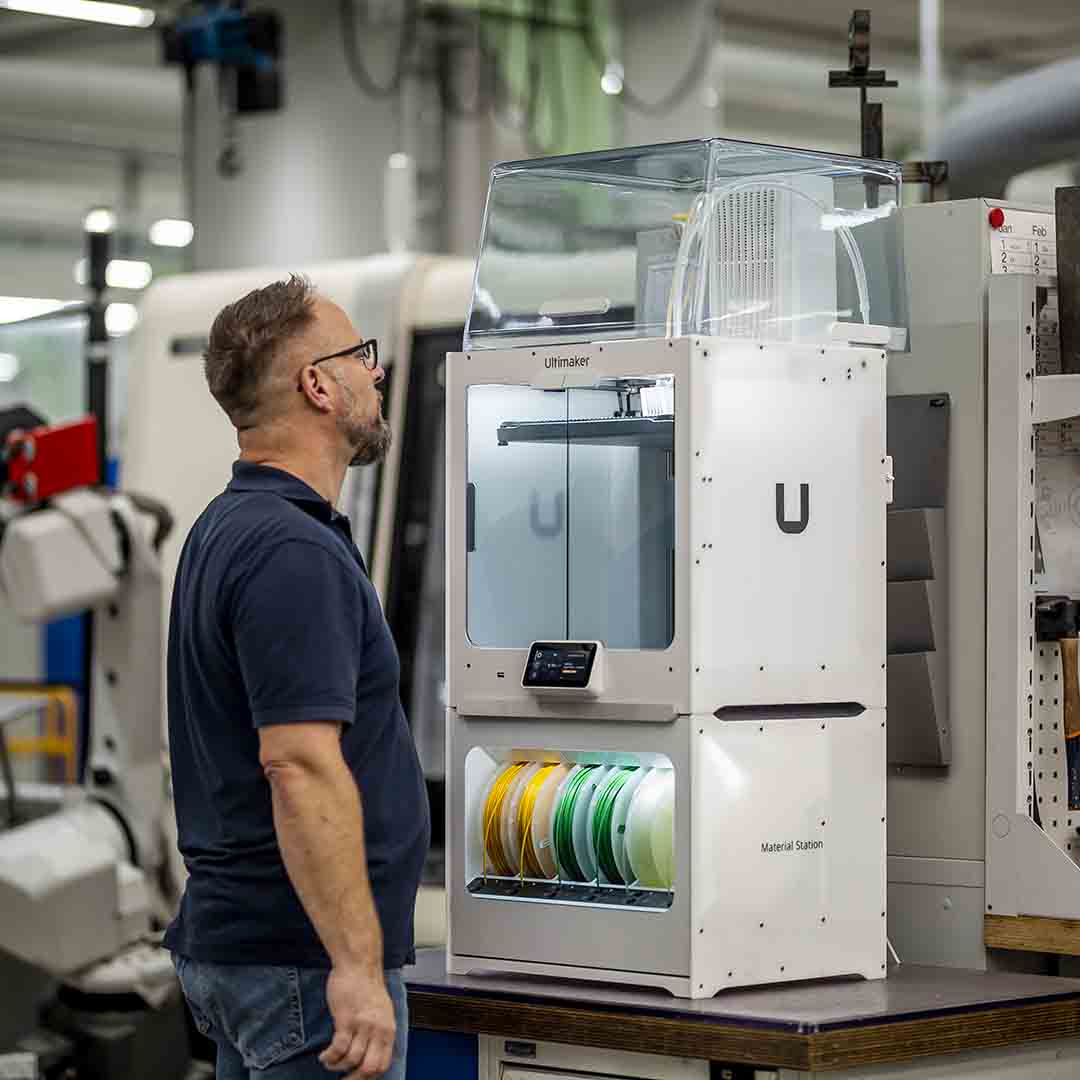This month marks 10 years since the first sale of an Ultimaker 3D printer. To celebrate the occasion Matt Griffin, host of the Talking Additive podcast, spoke to Ultimaker co-founder Siert Wijnia about the origins and history of the company. Read on for some of the best bits from the interview, and see how Ultimaker is continuing this journey in 2021 and beyond.
Beginnings
You realize that having an idea is not so difficult. But making that work... It’s blood, sweat, and tears.
Ultimaker grew out of the Protospace FabLab in Utrecht, the Netherlands. It started as a project between a few friends trying to make a 3D printer that would deliver accurate, useful parts without the costs and hassle that comes with larger industrial additive machines.
The inspiration for this came from the RepRap project started by Dr Adrian Bowyer. After many evenings spent building this “replicating rapid prototyper” – an open-source machine that could replicate most of its own components – they had a working 3D printer. But they noticed how much time and constant maintenance was required to keep it functioning properly, and began investigating some design improvements that would make it even better.
This drive to tinker, test, fail, and learn in order to make a better product was an important part in the early DNA of Ultimaker, which was founded by Erik de Bruijn, Martijn Elserman, and Siert.
As Siert puts it, “We just want to understand ‘why?’ I think the why question is so utterly important with our company. If I work on the deprime [process], I want to know why it fails. And if it’s the system that fails, why is the system failing? And then, behind the why is another why.”
The other key ingredient in this DNA which has continued throughout Ultimaker’s journey is that of collaboration and involvement. These were challenges solved together, first by the Protospace group and the co-founders, then gradually by more and more employees as the company grew.
Siert describes it like this: “It felt like a real community of people having the same feeling: ‘Let’s see where we can get with this – this is new!’ But underneath we had to create a structure because so many people would join that we would have to start organizing... You have to have a set of rules all together that you can play by if it is needed.”
And of course, the final ingredient that any start-up trying to change the world needs... Lots of hard work! By founding the company, the team committed not only to improving desktop 3D printing technology with their ideas, but to seeing this through and delivering products that would really help in the lives of engineers and designers.
“You realize that having an idea is not so difficult. But making that work all the way to the end is just work. It’s blood, sweat, and tears”, Siert remembers. “It will only work if you make it to the end and finish it off – that’s so important.”
A RepRap Darwin 3D printer assembled by the co-founders of Ultimaker, pictured next to an Ultimaker S5
Transformation
We’re all different, but together we are one.
The early years of Ultimaker saw several milestones passed quickly, as the Ultimaker Original 3D printer – a build-it yourself kit – found success in makerspaces, workshops, and education institutions around the world. The team moved into its first office in Geldermalsen, the Netherlands which had previously been an agricultural school and provided the space needed for proper R&D programs.
To begin with, people did all kinds of different jobs, with everyone from new employees to the co-founders taking on whatever jobs needed doing to develop and deliver the products in time – whether that was setting up supply chains or essential administration.
Over time, the company built up a network of trusted suppliers and as business took off, Jos Burger joined as CEO to guide the company through this growth process.
Siert talked about how a motto from his student days came to fit the spirit and approach of the Ultimaker team. “’We’re all different, but together we are one.’ I think that phrase really resembles how I look at the company. Luckily, we are all different but together we make it work.”
With this mindset in place, Ultimaker started to deliver on its founding mission, developing a series of hardware, software, and materials products that work together to make 3D printing achievable and productive for anyone.
The team behind the Ultimaker 3, with the printer in 2016
The Ultimaker 2 moved the hardware away from DIY kits to assembled machines, making them much more suitable for professional environments.
Together with a huge open-source community, Cura was developed and went on to become the world’s most used 3D printing slicer software.
Then came the Ultimaker 3, which finally delivered reliable dual extrusion enabling the creation of more complex geometries (thanks to PVA support material) and two-color prints.
Launched in 2019, the Ultimaker S5 offered the largest build volume of any Ultimaker printer alongside a number of other technical improvements. And the following year saw two accessories launched for the printer – the Air Manager and Material Station. Since then, the full Ultimaker hardware range has been completed by the Ultimaker S3 and Ultimaker 2+ Connect.
With the launch of PETG, Ultimaker has now built a portfolio of 12 materials. But since the beginning, being open to any filament has always been very important. More recently, this has led to the Material Alliance Program driving open innovation together with filament brands who contribute print profiles ready for use in Ultimaker Cura software.
The Ultimaker S5 Pro Bundle combines the Ultimaker S5 printer with Air Manager and Material Station peripherals
Ultimaker PETG launched in May 2021, the 12th filament in the Ultimaker range
Future
We’ve made a printer, but even more than a printer, now we're building that ecosystem.
So, what will the next 10 years and beyond hold for Ultimaker?
When asked to reflect on where the Ultimaker journey is heading, Siert commented: “We’ve really helped to put 3D printing on the map and make sure that it’s not just a gimmick, but an asset for companies and people. It gives a lot of opportunities for everyone to contribute in finding solutions for not just simple problems, but also complex problems.
“Tools are everything. And I think we’ve made a hell of a tool. I think there is so much more to improve in making these tools even more accessible, more reliable, easier to use... We’ve made a printer, but even more than a printer, now we're building that ecosystem.”
In 2021, another chapter of the Ultimaker story opened with Jos Burger departing and Jürgen von Hollen taking over as CEO. A few months into his term at the Ultimaker Transformation Summit Jürgen set out the strategic vision for the coming years, which you can watch below.
If you want to hear the full interview with Siert – including some fascinating technical insights into the design optimizations in the first Ultimaker machines, plus how the team busted thieves who broke into their warehouse – follow the link below to listen to Talking Additive podcast episode 25.



























